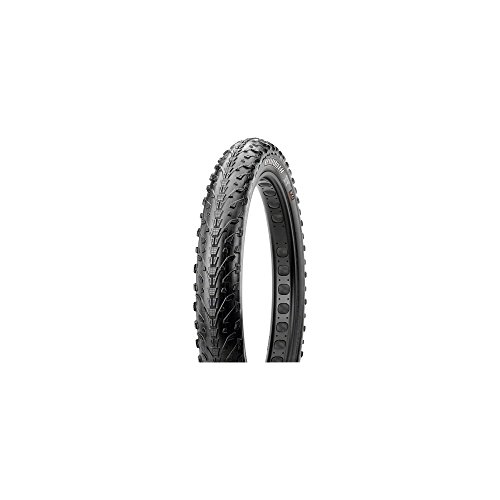Best Winter Bike Tires 2021
Contents
Maxxis Mammoth EXO Fat Bike Tire

Maxxis Minion FBF

Schwalbe Marathon Winter

Top Winter Bike Tires Buying Guide
Tyre option has a huge impact on your flight – the majority of roadway riders prioritise puncture resistance and grip in the wet over winter and low rolling resistance come summer. Winter tyres are generally created to reduce the variety of leaks that would otherwise hit the pause button on your trips, and provide much better grip in the damp. Summer season tires are generally produced utilizing a soft compound– this indicates they provide a lower rolling resistance, making them faster and lighter but much more prone to rips and damage. A whole new list of quality tires is all you need to increase your speed, racing and feeling great while doing the work. They can help you corner easier too! It is possible to get overwhelmed with regards to choosing which tyres are best, since there are an abundance to select from. Ensuring that you will be making use of the best tires in almost any given situation provides you with additional control over your bike. Whether you ride on rocks, snow, simple trails or trails with every kind of terrain, there’s definitely a tire for you. Bike tires are some of the most important pieces of a bike, so you’ll want to make sure you’ve got the right ones and that you treat them right.
Purchasing Best Winter Bike Tires? Keep These Items In Mind
The ultimate bike tyre would be incredibly light, absolutely resistant to punctures and insanely fast. You are unable to get anything you want in a tyre, so getting a pair of three things is not really so bad. Create your tyre choice in accordance with the kind riding that can be done. As an example, if the majority of your time and energy is spent traveling on gravel backroads or commuting by using an inner-city road, you will certainly be happier having a tire designed for protection against punctions than weight and speed. When you tend to ride on smoother roads that do not contain much debris, the more effective selection for you may well be more lightweight, racy tyres. Check out the manufacturer’s webpage or glance at the packaging to find out a tyre’s rolling resistance triangle, puncture protection, and where they sit in weight,
- Tire size – broader tires have become more popular throughout the seasons. Where once 23mm rubber was the uniform issue ‘choice’, now 25mm is the norm but many riders go for 28mm to better maximise the added cornering grip and comfort. Paired with the best rim, broader tires can be more aerodynamic, too. But, prior to making your time and money, it is vital to look for the capacity in the frame. Wide tires provide a wider but much shorter contact spot. A wider tyre can be faster because it minimises a tyre’s rolling resistance by reducing the energy lost to casing deformation. Wider tires work better for your personal patch. More crucial to the majority of us, broader tires (25mm and above) can also be performed at lower pressures to offer a smoother flight.
- To produce the key body of your tire, woven cloth is commonly used to encase the beads, building a casing. Many tyres are created from nylon fabric, but individuals in the higher end could possibly be made of silk or cotton. Because of the threads per inch value (known as TPI), the casing features a considerable affect on the ride quality. Sacrificing lower rolling resistance for puncture resistances, tires with thicker treads minimizing TPI exist. Though tyres higher in TPI tend to be more light in weight and get less rolling resistance due to finer threads, they are more likely to get punctures.
- Tread is rubber from the tire that makes experience of the highway. It’s made sturdier in comparison to the sidewall and may have a three-dimensional pattern. In terms of tread, there is lots of debate many believe tread is not required for bike tyres. It is far from all that uncommon for tread patterns to give an effective quantity of mechanical adhesion to the ground because the road surface texture is varied. The makeup of tires as well as their compounds are kept a secret from the manufacturers for many reasons. Generally softer compounds will offer superior traction but will wear quickly, while harder compounds will stand up to more abuse but won’t have the same grip.
- Grip vs Durability – if you’re searching for bike tires, you won’t want to sacrifice too much in rolling resistance or wear. A tire with a softer compound will offer better grip however will wear much faster. There may be not as much traction with harder tyres, though they are doing last longer. With regards to proper balance, the aggressiveness you ride and the kind of terrain you ride on are two crucial factors. An indication of a tyre’s hardness is measured in numbers – the higher the number, the harder the tyre. On one side, a 60a compound may last a number of seasons as it’s rather durable on the flip side, a 42a compound is better for corner traction and braking needs replacing every 6 months. In the event you look at enough manufacturers, you’ll realize that most of them offer multi-compound tires which can be a useful compromise of these two possibilities.
Other Variables To Consider Whenever You Buy Best Winter Bike Tires
- Using the sidewall, there exists rubber that gets applied aside part of the casing that is based on between your bead and the tread. The thickness of your tyre, plus the rubber compounds used is determined by the intended use.
- Sub-tread – Some tires will have a sub-tread layer to ward off leaks. Cheaper tires usually have an added layer of rubber beneath the tread which isn’t bad but it’s not nearly just like customized work or properly designed strips of fabric to strengthen the rubber.
Different Bike Tires Concepts you should know
- Tires will wear and tear over time, and it’s essential that you keep watch over the tread. Not only for the life of the tyre, but watching out for stuck glass or flints that haven’t penetrated just yet. Frequent cleanings and inspections will help locate potential problems before you’re out on the trail even though there’s always the risk of getting puncture damage as you go along, it’s always worth
- Bike tires and price – we pay for innovation in the rubber, quality of the building and construction and weight. Heavier steal beads, less puncture protection and much less grip are typical normal with the ones that are cheaper. Steel rigid tires are heaver and harder to transfer away from the bike than additional options like folding tires. Yes, they are less expensive, but your hands will be affected, because they are tougher to get off and on a wheel. I know that some people think that a cheaper choice is perfect. However, whatever they should know is that there are tyre manufacturers who be sure that their compounds are fantastic for different temperatures. This may cause their tires work efficiently all year round as being the protection, grip or longevity works well whatever the season.
- These treads are all different and meant to be used for different terrains. You will need to invest in a tread that is certainly designed for what you really are utilizing it for. If you are still undecided about how you are going to utilize your bike, it could be good to pick inverted treads. While they may not suit those who want something best for a unique terrain, they are able to serve you well in case you are a friendly rider or someone that likes riding in different terrains.
- There just isn’t much variation from the width and size of the tires. You need to know that tires that are wide are better for gripping and turning, and narrow tires are typically better for acceleration and used while taking a straight path. Your choice of tires should reflect the places you will be utilizing them one of the most.
Conclusion
To the inexperienced eye, the majority of bike tires are little bit more than rings of black rubber – however as there’s a variety of features and choices readily available to you. Ultimately, however, it boils down to this: When you’re riding a bike, you should have the ideal tires. Be sure to compare each of the important features, materials used, and prices before you make a decision in the terrain appropriate tires you want for the bikes.
